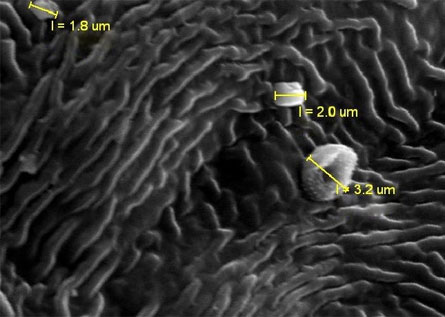PORTLAND, Ore. — Foliage on trees lining traffic routes could serve as low-tech pollution sensors, a new analysis suggests.

The exhaust of many vehicles, particularly those that burn diesel, includes copious quantities of microscopic particles of many sizes. Although particles larger than 10 micrometers in diameter are efficiently filtered by the upper respiratory system, those smaller than 2.5 micrometers across can reach areas deep within the human lung to trigger disease and inflammation, says Bernard Housen, a geophysicist at Western Washington University in Bellingham.
When Housen and university colleague Luigi Jovane analyzed leaves collected at several sites along streets in Bellingham, they found that the leaves along bus routes were as much as 10 times more magnetic than leaves collected on quieter residential streets. That boost in magnetism came from iron oxide particles in emissions that were trapped on the microscopically rough surface of the leaves, Housen reported October 18 at the annual meeting of the Geological Society of America.
Iron oxide particles smaller than 2.5 micrometers across are typically magnetic, while those larger than 10 micrometers aren’t. Rain washes away no more than 30 percent of all the particles stuck on a leaf, and even ultrasonic vibrations can’t fully cleanse the surface. These characteristics make tree leaves a good candidate for pollution monitoring, Housen says. Other pluses: Leaves are cheap, and they provide information about the air near ground level where people are, not high above the street where most air quality monitoring equipment is installed.
Scientists still must figure out how the number of iron oxide particles trapped by leaves relates to the total number of particles of different chemical classes in the air, says Housen. Because many air quality standards are based on exposures for short periods of time, such as eight-hour or 24-hour intervals, researchers must also figure out how to estimate short-term air quality from leaves, which accumulate particles throughout their growth.





